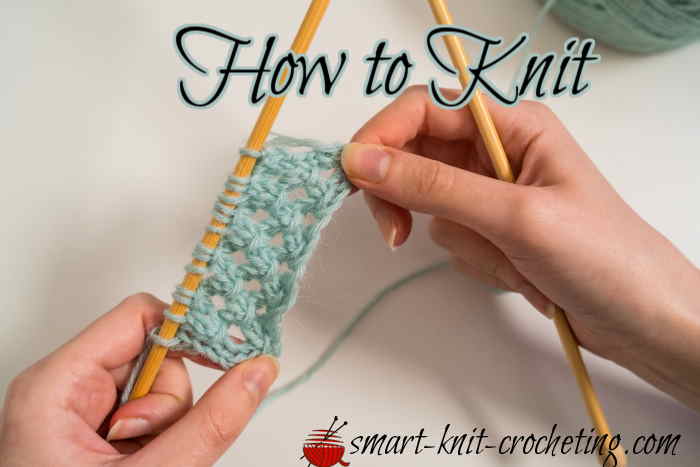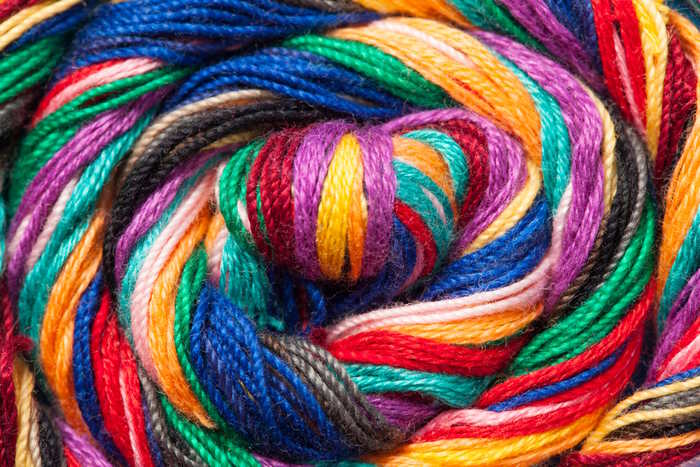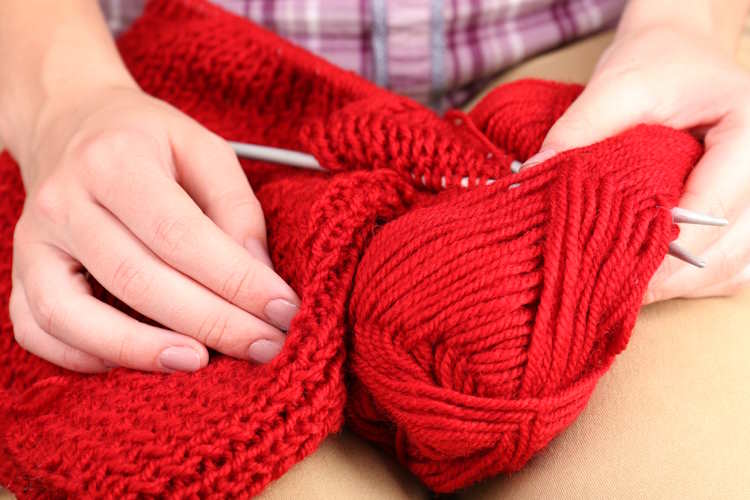- Home
- How to Knit: Basics
- Pick Up a Dropped Stitch
How to Pick Up a Dropped Stitch in Knitting
by Janice Jones
Dropped stitches in knitting are stitches that fall off the needle. As a beginner, this is a common occurrence, but don't worry. You don't need to rip out all your work. There is an easy way to fix them. If you are lucky, you will notice the dropped stitch right away, but chances are you might go several rows before you see the mistake.
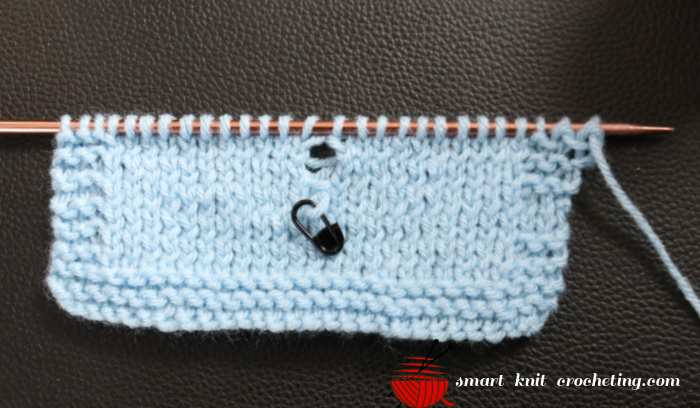
How Does a Dropped Stitch Look?
You'll notice a small gap in your work that contains horizontal strands of yarn. You may also hear these horizontal bars referred to as the rungs of a ladder. Sometimes the dropped stitch is tiny, so don't look for it just yet, just the horizontal strands. They are the tell-tale sign you've lost a stitch.
Learning how to pick up a lost stitch is an important skill to learn as you are likely to put it to good use. If the lost stitch is not fixed, you risk having the entire project unravel, and all your hard work is lost.
The process of picking up a dropped stitch is a little different depending on whether you are working a knit or a purl stitch. For the purposes of this tutorial, we'll assume you are working in a stockinette pattern.
Fixing a Dropped Stitch, Knitwise
To rescue a knit stitch, be sure that the right side of your work is facing you.
Once you see the dropped stitch, you want to secure it somehow to continue to unravel more. There are different ways of doing this. The easiest is to use a locking stitch marker, but you can also use smaller-sized knitting or cable needle or even a crochet hook.
If you use the same size hook or needle you are currently using, it will be much harder to grab. Continue knitting until you get to the place where the lost stitch should be.
Picking Up a Dropped Stitch Using a Knitting Needle
Insert the right-hand needle into the lost stitch, and then place the first horizontal strand onto the needle.
Both the lost stitch and the strand should be on the right-hand needle. Insert your left-hand needle into the dropped stitch and pull it over the horizontal strand.
Repeat for every strand remaining. Once all of the strands have been worked, transfer the slipped stitch to the left-hand needle and continue working as usual.
Picking Up a Dropped Stitch Using a Crochet Hook
Insert the crochet hook into the lost stitch Hook the horizontal strand closest to the hook. Pull through.
Repeat the process for each horizontal strand until you reach the knitting needles.
Assure that the stitch has not been twisted and place it back onto the left-hand needle. Look at the other stitches and then at the one you just put on the left needle. They should all be facing the same way. Continue knitting.
Fixing a Stitch, Purlwise
If you realize you have dropped a stitch on the purl side of your work, the method is just slightly different.
To Fix a Purl Stitch with a Knitting Needle
Using your right-hand needle, move the horizontal strand in front of the dropped stitch. Insert the yarn strand and the stitch from the back onto the right needle. Insert the left needle onto the strand, loop it over the stitch, and then off the needle. Repeat the process for any remaining strands.
Remember to move the strand to the stitch's front before inserting the strand and stitch onto the right needle. Once you've picked up all the stitches, place the stitch back on the left needle and continue working as you normally would.
Or
An easier way to fix a purl stitch is to wait until you on the knit side and fix the stitch, as I described earlier in the section Fixing a Knit stitch knitwise.
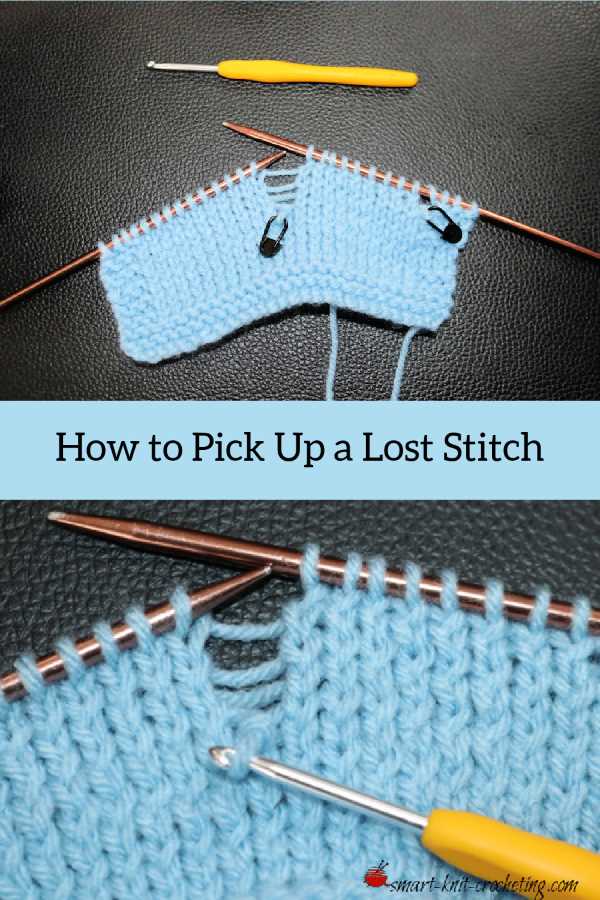
Troubleshooting: Twisted Stitches
So you can breathe easily, you've picked up your stitch, but when you look at your work, you see that the picked-up stitch does not look like all the other stitches. You don't see that familiar V-shaped stitch. It seems more like it has a braid in it. You have twisted your stitch. There is a time and place for twisted stitches, but not here.
To understand a twisted stitch, you need to know how a stitch should look. Think of a stitch as a loop. If you can't visualize this, remove a stitch from your needle and hold it between your fingers. Take a look.
The loop has a left side and a right side. Think of the left side as the left leg and the right side, the right leg. The stitch's right leg should be on the front of your needle to ensure it isn't twisted. If it isn't, you can take it off and place it back on with the right leg facing you.
Alternatively, if you prefer, when knitting the stitch, insert your needle in the stitch's back rather than in the front. Your stitch will not be twisted.
Troubleshooting: Tension
You might notice that the stitches you picked up look smaller than the rest. This is common because the horizontal strands that you used to pick up the stitch are short. If you had knit the stitches usually, you would have used more yarn than you have to work with on the horizontal strands.
You may be able to fix it somewhat after you block your work, but you may need to go back and rip out and start knitting again if it is a very noticeable problem.
About Janice
Hi, I’m Janice, the voice behind Smart-Knit-Crocheting. I love to knit and crochet and even more, I love teaching others what I know.
Though I learned to knit and crochet as a child, I didn’t get serious about these amazing hobbies until I retired. I’m a certified knit and crochet instructor through the Craft Yarn Council and am working on becoming a Master Hand Knitter through The Knitting Guild Association.
I’m currently living with my husband of over 50 years and our 6 Shih Tzu dogs.
I love hearing from you, so please drop me a line and let me know what you’re working on, whether you love knitting or crocheting more, and if you have any questions. Please visit my about me page for more information.
Happy Crocheting
